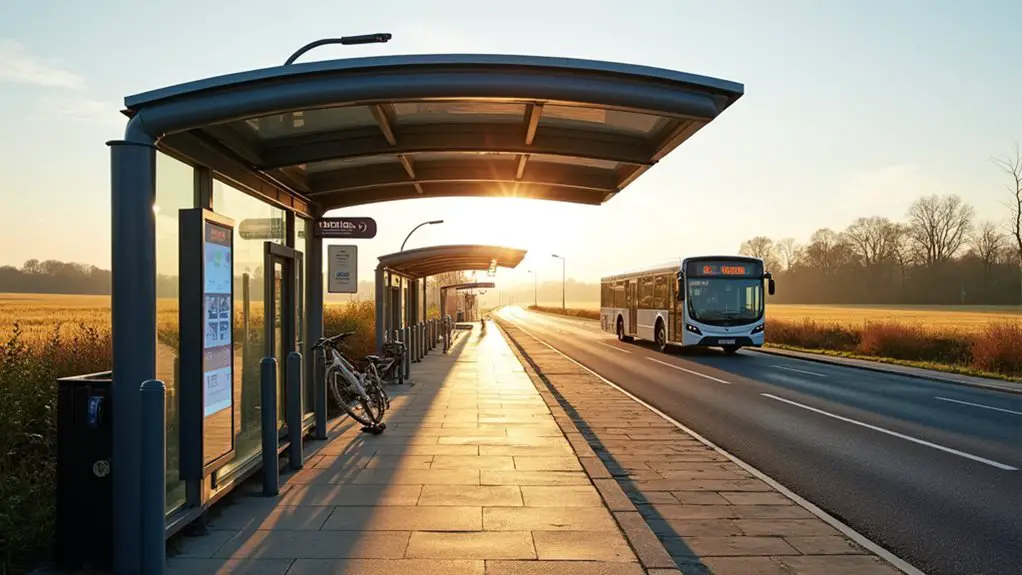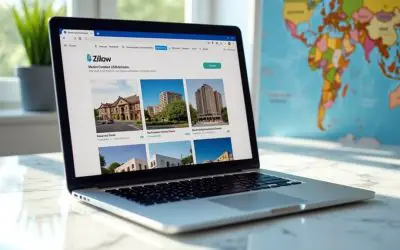Norfolk is receiving a £49.5 million investment (not £34m as suggested) to transform its transport system. You’ll see “Gold standard” bus stops with real-time information screens, integrated travel hubs connecting various transport modes, and a new £3 fare cap starting January 2025. The funding aims to increase service levels by nearly 40% and make 7,400 additional jobs accessible within 45-minute trips. The extensive plan addresses rural barriers through strategic infrastructure improvements.

As Norfolk County Council deploys its substantial £49.5 million funding package from the Department for Transport, residents across the county are beginning to see tangible improvements to their public transport system. This notable investment positions Norfolk among the top six allocations in England, demonstrating strong government support for the region’s transport needs.
You’ll notice the implementation of “Gold standard” bus stops throughout the county, featuring upgraded layouts, amenities, and real-time information screens. Six of these improved stops have already been completed, including locations at Hunstanton Tesco and Attleborough Queens Square, with more on the way.
The council is allocating £9.8 million specifically to develop integrated travel hubs and boost bus stop infrastructure countywide. These improvements include real-time departure screens, better shelters, improved seating, enhanced lighting, and updated printed information at stops.
Travel hubs represent a central component of the transformation, designed as interchange points connecting various transport modes with standardized, quality facilities. North Walsham has already completed the first integrated Travel Norfolk Hub, setting the standard for future developments.
Work continues at Cromer and King’s Lynn travel hubs, with completion expected by spring 2025. Additional hubs are planned for Hunstanton, Sheringham, and Diss, each featuring improved waiting areas and connections to multiple transport options.
The redesigned bus network aims to increase service levels by nearly 40%, improving your access to jobs and vital services. Passengers will also benefit from the new £3 fare cap for single journeys starting January 2025, making travel more affordable across the county. Once fully implemented, you’ll be able to reach approximately 7,400 additional jobs within a 45-minute trip using walking and transit options.
This investment directly addresses rural transport challenges by improving coverage and frequency in lightly populated areas. Infrastructure upgrades will boost accessibility for elderly and disabled passengers, while real-time information will help you better plan and connect trips in remote locations. The redesign was developed through significant public engagement with residents and elected officials to ensure the new system addresses community needs.
Though implementation has faced delays due to post-COVID driver shortages, recruitment efforts are underway to restore full service across the network. The thorough approach integrates walking and cycling infrastructure to support first and last mile connectivity, making public transport a more viable alternative to private vehicles.
Frequently Asked Questions
How Will Funds Be Allocated Across Different Norfolk Communities?
The £49.55 million fund will distribute approximately £12 million toward expanding bus routes across both rural and urban Norfolk communities.
You’ll see a balanced allocation between Norwich’s urban center and smaller villages that have historically lacked reliable transport. Funding prioritizes areas with low connectivity, supporting evening and weekend services critical for rural residents.
The investment also covers infrastructure modifications like depot upgrades for the new electric bus fleet, addressing both immediate service needs and long-term sustainability goals.
What Measurable Outcomes Will Determine the Project’s Success?
Success will be measured through infrastructure improvements, usage metrics, and environmental outcomes.
You’ll see completion of A47 improvements and the Thetford SUE investment as key milestones.
Public transit ridership increases, reduced single-occupancy vehicle trips, and expanded cycling usage will demonstrate modal shift progress.
Environmental metrics include emissions reductions and increased alternative fuel adoption.
Project delivery efficiency and stakeholder engagement will also determine success, with timely completion within the £34m budget being critical.
How Were the Specific Transport Priorities Identified?
Norfolk’s transport priorities were identified through four key processes.
You’ll find they engaged with communities and local authorities through consultation and steering groups to understand local needs.
They aligned projects with government funding objectives to leverage the £34 million effectively.
They conducted data-driven assessments of existing infrastructure conditions.
Finally, they integrated transport planning with broader economic and social goals, guaranteeing projects addressed rural isolation while supporting development and sustainability initiatives.
Will Ticket Prices Change for Existing Public Transport Services?
Yes, ticket prices will change.
Your weekly and group tickets will increase by about 10% from March 30, 2025, as the discount drops from 25% to 15%.
Single fare caps on Sanders Coaches local services have already changed from £2.00 to £3.00 since January 2025.
The fare structure is now simplified to three levels: £2.00, £2.50, and £3.00.
You’ll still find some reduced options, including the £1.50 Great Yarmouth Town Zone ticket for short trips.
How Will the Project Address Environmental Sustainability Concerns?
The project will address environmental sustainability through multiple strategies.
You’ll see GHG emissions reduced via electric vehicle promotion and improved public transport options that decrease car dependence.
Infrastructure will be designed for climate change resilience, particularly against flooding risks in coastal areas.
The initiative prioritizes sustainable land management by minimizing impacts on agricultural areas and natural habitats.
Additionally, technological innovations like hybrid vehicles for cargo handling will cut emissions by up to 90% in transport operations.
- How £34m Is Transforming Norfolk’s Broken Transport System – Can It Overcome Rural Barriers? - September 8, 2025
- Can I Release Equity From My Rental Property? - August 22, 2025
- How Much Will a Plumber Charge to Replace a Radiator? - August 22, 2025


